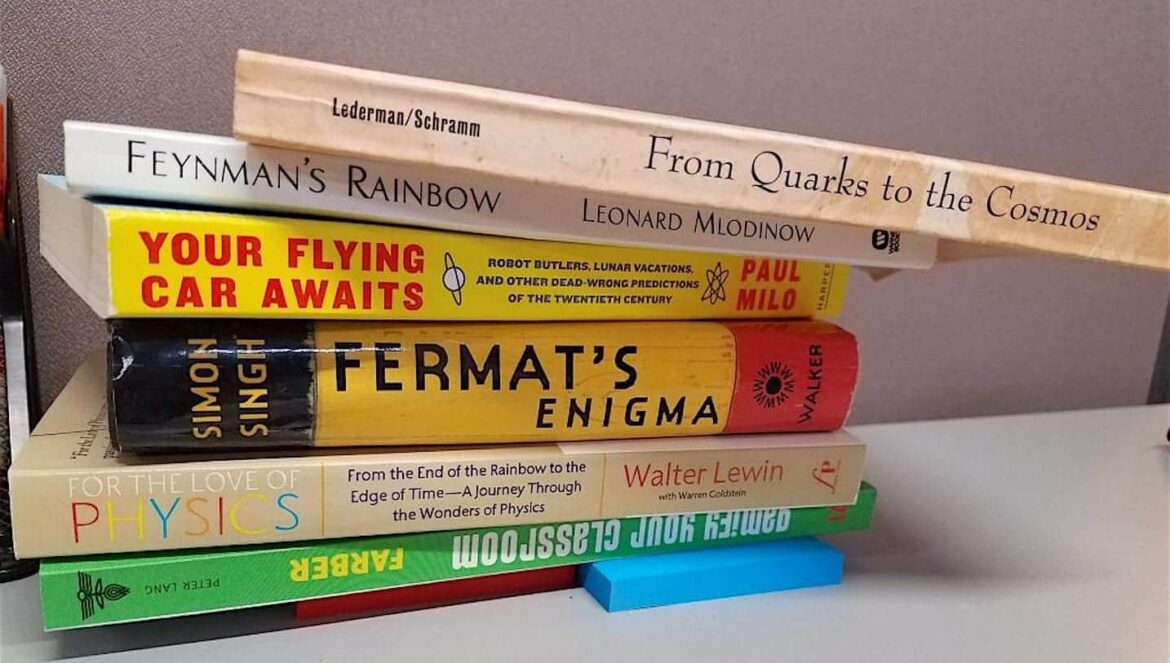Engaging in the 3 C’s to Make Science Come to Life
by Monica Genta
 Science is: boring, hard, worksheets, watching videos, vocabulary, my least favorite subject.
Science is: boring, hard, worksheets, watching videos, vocabulary, my least favorite subject.
Hey. My name is Monica Genta and I’m recovering from a hate of science. I have been in remission for about 15 years and the road to transformation was hard and long. But, holy cow it was refreshing. Somewhere between my high school biology teacher and a biological psychology professor in college, I found an extreme love for science and now my list of “science is” words is very, very different.
Science is: exhilarating, relevant, a way of thinking, super fun, interesting, experiences, my favorite subject.
Big difference, right?
Now, as a 7th-grade science teacher, I am passionate about ensuring my students leave my classroom every day with the 2nd list as their definition of science. It is my goal and my mission to show students that science is all around us and that science is not in a textbook, it is a way of doing life.
My classroom is not…
 Hey, kids! Today we are going to read Chapter 2.1 and then do the Chapter 2.1 worksheet. Tomorrow we will move onto Chapter 2.2 and then complete the Chapter 2.2 worksheet. Tomorrow, you guessed it, Chapter 2.3 and of course the Chapter 2.3 worksheet. And just to mix it up on Friday we are going to do the Chapter 2 quiz from the back of the book. Go ahead and memorize those highlighted yellow words from the text and don’t actually read the pages in each chapter to fill in those worksheets, just look up answers in the back of the book. If you do all these things, you are bound to get an A+.
Hey, kids! Today we are going to read Chapter 2.1 and then do the Chapter 2.1 worksheet. Tomorrow we will move onto Chapter 2.2 and then complete the Chapter 2.2 worksheet. Tomorrow, you guessed it, Chapter 2.3 and of course the Chapter 2.3 worksheet. And just to mix it up on Friday we are going to do the Chapter 2 quiz from the back of the book. Go ahead and memorize those highlighted yellow words from the text and don’t actually read the pages in each chapter to fill in those worksheets, just look up answers in the back of the book. If you do all these things, you are bound to get an A+.
Have you had that experience as a student? Maybe that is the experience you are providing for yours…
I don’t want my students growing up and thinking that is what science is all about. I don’t want my kids thinking scientists sit in offices all day filling out worksheets and making vocab flashcards. Don’t get me wrong, understanding the vocabulary and comprehending scientific reading is very important, but it is so not the backbone of my class. So, what do you do instead? I have 3 pillars for my science class: conversation, creativity and collaboration. Let’s look at the three C’s a little deeper.
Sit Down! – Engage in Conversation
 44-minute lectures where a writing utensil can’t move fast enough. Students sit with one hand resting on their face and their other hand has black smudges on the side of it because their hand is moving across their paper faster than the ink can dry. Ugh. That’s rough, but I’ve been there and so have you! Conversation is one of the pillars of my class. And it’s not a one- way conversation where I speak to (or at my students). I want engaging dialogue where all students are participating, asking questions, researching responses, respectfully inquiring or disagreeing, and most importantly… thinking!
44-minute lectures where a writing utensil can’t move fast enough. Students sit with one hand resting on their face and their other hand has black smudges on the side of it because their hand is moving across their paper faster than the ink can dry. Ugh. That’s rough, but I’ve been there and so have you! Conversation is one of the pillars of my class. And it’s not a one- way conversation where I speak to (or at my students). I want engaging dialogue where all students are participating, asking questions, researching responses, respectfully inquiring or disagreeing, and most importantly… thinking!
Kids aren’t doing that when I’m standing at the front of the room talking about the science topic. I want to be talking about science with them, as a facilitator. How do I do it? Driving questions, my friends! For me, a driving question is one that starts with a: who, what, where, when, why or how. It is a question that can’t be answered with a yes or no. It requires depth and dialogue and it is so much fun! For example, instead of having a student do that worksheet on plants or lecturing about the parts of plants, I may simply ask the question, “Why are plants green?” A student might give a great answer of chlorophyll. But this is where the conversation starts. From here I would engage students in countless other “W Questions.” Where does that come from? How do you know that? How can you prove it? Who studied this? Where have you seen this in your real life? What would we need to grow plants?
BOOM! See what started happening there? One question leads to another and students are the ones doing all of the talking, I’m only doing the questioning. When we get stuck, we research, we read, we use prior knowledge, we find the answer together! Side note, we are totally not in traditional desk rows for this. We are box style so every student can be seen and heard equally within the square. It’s a magical thing.
Use Practical Items- Engage in Creativity
 Triple Beam Balance. Expensive Glassware. Density Cubes. What do these three items have in common? They are all science equipment that is unnecessary because it doesn’t actually enhance the learning experience. I get that fancy science gear can be fun at times, but it also sucks the life right out of the yearly budget. We know that times are tough when it comes to school funds, so why not say no thank you to next year’s allotment of high-powered magnets. Instead, why not do an entire curriculum with practical everyday objects.
Triple Beam Balance. Expensive Glassware. Density Cubes. What do these three items have in common? They are all science equipment that is unnecessary because it doesn’t actually enhance the learning experience. I get that fancy science gear can be fun at times, but it also sucks the life right out of the yearly budget. We know that times are tough when it comes to school funds, so why not say no thank you to next year’s allotment of high-powered magnets. Instead, why not do an entire curriculum with practical everyday objects.
Another pillar of my science class is creativity. Nothing says innovative like creating a week’s worth of lessons out of breakfast cereal. No, seriously, for less than $5 at the local dollar store, students can engage in lab activities with bowls, spoons, and some good ole’ fashion cereal. Carbs aren’t your thing? No problem! Go buy a few rolls of paper towels. Not into that either? Ok, how about some straws, balloons, and tape. What do you do with all this “stuff” to learn? Why not have students do a breakfast lab by asking the driving question, “What cereal stays crunchy the longest?” Another example using the paper towels could be, “What paper towel really is the quickest picker upper?” One more example for the road, “How long does it take to blow up a balloon with a straw vs. with my mouth?”
What does all this have to do with science? EVERYTHING! Students are collecting data, thinking outside the box, finding patterns, making observations, and engaging in a hands-on activity that is relevant to their lives. That is what science is all about, Baby.
Throw the Lab Guides Out the Window- Engage in Collaboration
 Step 1: Put 10 pieces of cereal in each bowl
Step 1: Put 10 pieces of cereal in each bowl
Step 2: Pour ½ cup of milk into each bowl
Step 3: Stir the bowl of cereal
Step 4: Remove cereal that breaks apart
Step 5: Record the time of removal
You hand that list of steps to students right before they start that creative cereal lab of yours. They follow your exact directions, complete the lab and “ta-da!” that was science! I don’t think so.
 You see, in my class, I throw all the lab handouts and step-by-step directions out the window. I want my students to have conversation, creativity, and of course that last pillar, collaboration. When we tell students exactly what we want them to do and exactly how we want them to do it, we stifle the entire learning and thinking process. We disregard their ability to engineer and image. There is nothing greater than putting a bunch of supplies on a table, writing a driving question on the board and then declaring to the kiddos, “Go for it!”
You see, in my class, I throw all the lab handouts and step-by-step directions out the window. I want my students to have conversation, creativity, and of course that last pillar, collaboration. When we tell students exactly what we want them to do and exactly how we want them to do it, we stifle the entire learning and thinking process. We disregard their ability to engineer and image. There is nothing greater than putting a bunch of supplies on a table, writing a driving question on the board and then declaring to the kiddos, “Go for it!”
Of course, at first, they will be like small children without their security blankets. They will wonder around and maybe even shed a few tears as you have essentially taken away science as they know it. No directions mean no official “right or wrong” and that can be a struggle for some kids, especially your high achievers. Don’t let their fear turn into your frustration. Guide them with a simple reassurance, “You got this! I look forward to seeing all the things you and your group can come up with.” They will get something figured out. I promise! And when they do I can assure you the learning that will spill from your walls will be so worth it. When they write the rules (literally, they are now writing the steps to the lab that THEY created) they become the true scientists.
So, there you have it! Science without relying on the text as the only learning tool. How refreshing is that? Remember, the word science has two c’s in it, but your classroom should have three: conversation, creativity, and collaboration.
Author
Monica Genta is a teacher, author, speaker, life enthusiast, and laugher. She has earned a Masters in Curriculum & Instruction and a Masters in Educational Leadership & Administration. She is a Nationally Board Certified master teacher. In asking what she teaches her response is “kids” but typically does so in a science classroom.
Genta is extremely passionate about the ‘hidden curriculum.’ Her philosophy on education is focused not on what you teach kids, but how you reach them. She is a believer in the ‘roots before fruits’ concept in life development. Genta is full of energy, full of passion, and full of love for helping others on their journey in life and learning. For more information or to check out her publications check out www.monicagenta.com. You can also find her on MyEdExpert.com.
Further Reading
- MyWabashValley.com – Making Science Fun
- SmilePolitely.com – Making science accessible, useful, and fun in C-U
- Daily Herald – Libertyville schools making summer classes fun
